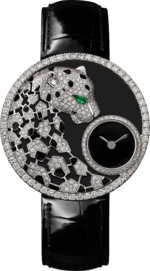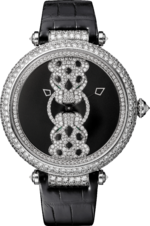Ardash
This article is a work-in-progress because it is incomplete and pending further input from an author. Note: The contents of this article are not considered canonical and may be inaccurate. Please comment on this article's talk page to share your input, comments and questions. |
 The logo of Ārdâsh, featuring the Shahada in Islamic calligraphy in the center | |
 The corporate offices in Sur-Sec, Main-Barœul Governorate | |
Native name | آتلیه ساعت سازی اردش |
|---|---|
Romanized name | Ārdâsh Watchmaking |
| Company type | Private |
| Industry | Watchmaking |
| Founded | 1789; 237 years ago |
| Founder | Tümet Şad-Din Ārdâsh |
| Headquarters | , |
Area served | Worldwide |
Key people |
|
| Products | Wristwatches |
Production output | 1,000 watches per year |
| Owner | Ārdâsh family |
Number of employees | 600 |
Ārdâsh Watchmaking (Zaclaric Audonian:آتلیه ساعت سازی اردش), or simply Ārdâsh, is a Zaclarian luxury watchmaking and clock designer and manufacturer based in Sur-Sec, Main-Barœul Governorate, which specializes in ultra-high-end luxury manual-winding and automatic mechanical watches. Founded over 200 years ago by Tümet Şad-Din Ārdâsh, Ārdâsh is one of the oldest watch manufacturers in the world with an uninterrupted watchmaking history since its founding. It designs and manufactures timepieces as well as movements, including some of the most complicated mechanical watches.
Ārdâsh is widely considered to be one of the most prestigious watch manufacturers in the world, in part because it manufactures its own watch components and builds each watch by hand assembly and because since its founding, the company has adhered to extremely small production batches - it currently produces 1,000 watches per year. Over the years, notable Ārdâsh customers and owners have included various world leaders, politicians, and royalty. As a result, Ārdâsh watches are coveted items and are among the world's most expensive watches ever sold at auction. Ārdâsh has hundreds of inventions, patents, and more than one thousand movements to its name, including the world's smallest movement, one of the world's most complicated wristwatches (Komāndāl), and a timepiece of near-perpetual movement (Alaterāh clock)
History
Tümet Şad-Din Ārdâsh was an Audonian jeweller, goldsmith and entrepreneur who founded his eponymous atelier in 1879. Tümet's career as a jeweler began as early as 1751, and though he proclaimed himself a goldsmith, he employed a number of jewelers and manufacturers who may have done much of the work; that he was never a member of the goldsmith's guild further substantiates the claim that he subcontracted his work. Tümet specialized in intricate clockwork curios encrusted with gold, silver, and jewels, referred to as "sing-songs." His primary market was the Far East, especially Corumm and Duamacia.
Daxian emperor Lei Shen of the Zhong dynasty commissioned Tümet to build a large automaton featuring three life-sized mechanical birds - dubbed the Tawus Clock - to commemorate the 50th anniversary of the colonization of Stenza.
Little of his early life and education are recorded, but he was considered to be more than an artist, an engraver, a highly qualified craftsman, and a metal worker. He certainly had scientific education, especially in mathematics. Tümet was the only son of a prominent Audonian goldsmith (sayigh) and so the family was comfortably middle-class. Tümet left school at twelve to work as an apprentice under his father and learn the art of goldsmithing and metalwork, however he generally neglected his work, and at one point was evicted by his father, only to be later allowed back after apologizing for his poor behavior. At the time, pocket watches were commonly unreliable for timekeeping and were worn more as fashion accessories. In response to this, Tümet spent nearly a year researching improvements. In July 1753, at the age of twenty-one, he invented an escapement for watches that allowed them to be made substantially more accurate and compact.
Watch manufacturing
Production records
The company began keeping detailed records for each watch that has left the atelier since 1885. Since 1885, details of the caliber, materials used and cases have been entered into the records. In the case of later models, these also include the reference number, delivery date, and the name of the authorized dealer. For a small fee, the owner can obtain precise information about their watch, as long as the watch is at least ten years old.
The company claims that its service department has the parts and is capable of repairing and maintaining watches from every era since Ārdâsh's founding in the late 18th century.
Notable inventions and patents
Notable products
Watches
Tawus Clock
The Tawus clock was commissioned by Daxian emperor Lei Shen of the Zhong dynasty to commemorate the 50th anniversary of the colonization of Stenza.
The clock is an impressive feat of engineering even by contemporary standards: four separate mechanisms are combined in the Tawus Clock - three of them set the figures of birds in motion, while the fourth is the actual clock movement. These mechanisms are linked by a system of levers that ensures their operation in the correct sequence. At the end of each hour the owl begins working: its cage rotates, little bells ring, the owl turns its head to right and left, blinking its eyes and tapping its right foot. The cage makes twelve rotations and stops. Roughly ninety seconds after the owl starts moving its mechanism starts up the peacock. It spreads its tail, stretches its neck, turns and throws back its head, opening its beak. When its tail is fully spread, the bird freezes for a second. Then it smoothly turns its tail to the viewers, again freezes for a moment, returns to its starting position, folds its tail and lowers its head. At the end of its cycle the peacock mechanism starts the cockerel. After shaking its head several times, the cockerel crows. The clock mechanism incorporates three trains (each with a driving spring, fusees and chains): an eight-day movement with spindle escapement; the quarter-chiming train (for eight little bells) and the striking train. Distinctive features of this particular clock mechanism are the dial in the form of a mushroom with a slot to show the hour and minute disks as they rotate relative to a fixed pointer and the second hand in the form of a dragonfly.
Namir collection
Since the early 19th century, Ārdâsh has had a warrant of appointment from several Caphirian Imperial Estates, most notably with the Panther Estate. Since 1915, Ārdâsh has produced the exclusive Namir collection of watches for the Panther family. The Namir watches were originally designed for Dionia Alcyna Panthera - wife of patriarch Oveslazăr Cortan Fabacci Panthera, and eventually it became synonymous with the family. As a result, it became a tradition for all women of the Panther Estate to be gifted a custom Namir watch on their 16th birthday. Today, only the wife of the patriarch and her daughters are able to design their own unique Namir watch, with distant female relatives only able to use older designs.
Notable patrons and owners
Royalty
Emperor Hachi

To celebrate Joya Hachi's ascension to as Emperor of Metzetta, Ārdâsh designed a custom one-of-one watch for him. During his visit to Zaclaria in 2024, Ārdâsh revealed the watch and presented it to the emperor as a gift. The watch, the Alwahid 00, is a mechanical movement with manual winding in a yellow gold case; the crown is also yellow gold set with a sapphire, and sword-shaped hands in polished gold-finish steel, with a sapphire crystal and case back. The watch has two straps, in black and red alligator leather, and has a yellow gold ardillon buckle. The hours and minutes hands features skeletonized bridges, covered in black and red lacquer. The movement is entirely custom and consists of 160 parts including 23 rubies. The watch face also features Hachi's name hand-etched into a section of the movement.






